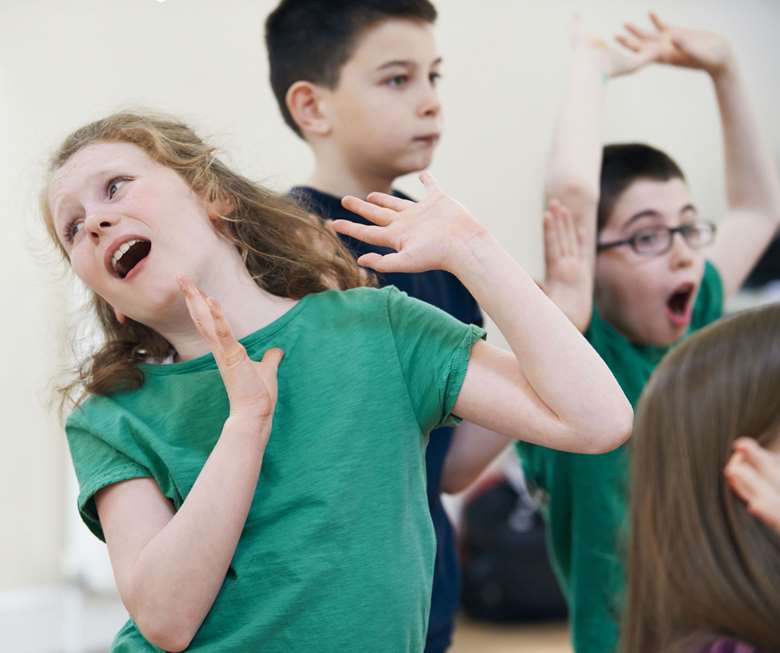Drama Strategy: Active storytelling
Patrice Baldwin
Tuesday, December 1, 2020
Patrice Baldwin, international Drama for Learning specialist, shares a key drama strategy for familiarising students with a story

ADOBE STOCK/HIGHWAYSTARZ
‘Active Storytelling’ can be done individually, in groups and by whole classes. It can be set up in various ways and often requires the students to respond spontaneously and ‘in the moment’ to the story that is being told (usually by the teacher).
Sometimes the students will be asked to mime silently in response to the story. At other times, the teacher might allow or expect students to speak in role during their enactment. Everyone might be asked to enact continuously as the story is being told, or to take turns at acting out different parts of the story. They might be asked to make and hold still images that illustrate the story as it is told.
Active Storytelling can help students become familiar with the story of the drama. This can be particularly helpful if it is a complicated story or a historical one that needs to respect evidence. The technique can also be used at the end of the drama to help students revisit, reflect on and literally ‘re-member’ the story in an embodied way.
When teachers become the narrative storytellers of the drama, they can choose to emphasise various parts of the story, focusing the students’ attention where they want it to be for the learning.
Teacher as storyteller
The students stand in a space. The teacher slowly tells the story of the drama, pausing from time to time to ensure that they have sufficient time to respond individually and physically, through mime. The students can become any part of the story, e.g. the scenery, the objects, the characters, or the actions. The students might be asked to mime silently or can be prompted by the storyteller to add sounds and/or speak some of a character's words in role, e.g. during ‘Active Shakespeare’.
Active Storytelling can also be carried out in pairs or groups, with students responding spontaneously and collaboratively to the story that the teacher is telling. The students are usually not allowed to talk about what each of them will do. They are expected to pick up on each other's non-verbal signals and respond physically and quickly together to the storytelling.
Whoosh!
The students stand in a large circle. The teacher starts telling the story, pausing from time to time and signalling to one or more students that they need now to enter the circle and act out whatever is happening at that moment in the story. As they enter the acting space, they will spontaneously become characters, objects, or maybe even parts of the setting. The teacher moves around the circle, signalling turns in sequential order. The students need to know whether they are expected just to mime silently or are also allowed to speak in role.
The teacher then carries on telling the next part of the story and signalling for more students to enter the space and enact whatever is being told. With a whole class, the acting space will soon get quite full, at which point, the teacher simply says, ‘Whoosh!’ and gestures that they all need to clear the acting space and go back to their places at the edge of the circle. The teacher then carries on telling the story, bringing in more students again (and saying ‘Whoosh!’ again, when necessary), until the whole story has been told. A demonstration of ‘Whoosh!’ (by RSC Learning) can be seen on YouTube by searching ‘Teaching Shakespeare Royal Shakespeare Company’.
Passing on the story
This activity can be used either to collaboratively recount a known story or to create a new story. It can be carried out in pairs, small groups, or whole classes. One student (or maybe the teacher) starts the story and then signals that they are passing the storytelling role on to the next person, who then continues it.
The storyteller might simply clap their hands to signal that they are passing the story on or could pass on a symbolic object with the story, e.g. a storyteller's shell or a stick. Whoever holds the object becomes the storyteller. Those who are not storytellers at the time can just be asked to listen or could be asked to enact the story being told until it is their turn to become the storyteller.
Active ‘storyboards’
The story of any drama can be revisited and represented through re-creating and sequencing its key moments. Groups can be asked each to devise a still image of a different key moment. These can then be presented seamlessly, in chronological order, maybe with a storyteller's narrative added. Alternatively, groups could be asked to devise the key moments silently in slow motion scenes, accompanied by the teacher storytelling the scenes.

